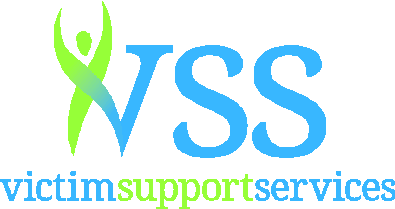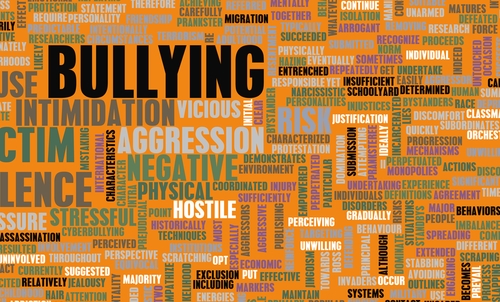National Bullying Prevention Month
October is National Bullying Prevention Month – a time for communities to get involved and take a stand against bullying. In that spirit, this month, we want to bring awareness to one specific topic that falls under the umbrella of ‘bullying’. For many, it is a common perception that bullying is strictly a childhood issue. Yet the reality is that it is not merely an issued faced by children. Although it tends to stay under the radar and gets little (if any) media attention, a significant oppressor of our time is adult bullying. More specifically, we want to shine a light on bullying that takes place at work – a place where we spend so much of our lives.
Almost 75% of employees surveyed have been affected by workplace bullying at some point.
A considerable number of studies have focused their attention on the mental and physical health consequences of workplace bullying. Einarsen and colleagues (2011) have found that “Bullying at work means harassing, offending, socially excluding someone, or negatively affecting someone’s work tasks.” They went on to explain that is a gradual process in which an individual is subjected to indirect and subtle forms of psychological violence. The negative behaviors are repeated in a systematic way, and over a prolonged period. An individual exposed to bullying behaviors may end up leaving the organization and/or suffering severe psychological trauma, and the external repercussions are often less significant than the internal impact on the victim. The emotional and psychological damage to self-worth, confidence, and to dignity, is enormous.
According to the Workplace Bullying Institute (WBI), bullying can take one or more of the following forms:
• Verbal abuse (aggression)
• Offensive conduct which is threatening, humiliating or intimidating (humiliation)
• Work interference or sabotage (manipulation)
Essentially, any bullying behavior you can possibly think of will typically fit into one of those behavioral categories. Aggressive behavior is the easiest to spot as its examples include yelling, angry outbursts, sending ugly emails, getting into someone’s personal space, or making offensive remarks. It is any communication we can see, hear, or point out as being obviously aggressive. In contrast, humiliation can involve spreading rumors or gossip, isolating someone, discussing their mistakes (or perceived mistakes) in public, and copying others in on negative emails. This type of behavior can be a bit more difficult to spot, yet its effects are far-reaching as the victim’s character is re-written into something menacing and ugly. Manipulation tends to be more focused on work tasks/load. This could include assigning someone so much work that they could not possibly complete it by the deadline; changing their schedule with no explanation; and taking important tasks away. It is the most difficult type of workplace bullying to identify because it is passive-aggressive in nature.
Most surprising, is how the “targets’ can go from being hardworking, committed employees to becoming employees with poor performance and with an obvious shift in attitude, within a relatively short period of time. This happens because the target has been set up for failure, or harassed to the point that they lose faith and confidence in themselves, and they eventually become what the bully wants them to become – the “villain” rather than the “victim”.
Workplace bullying is a stressful phenomenon, and has proved to have detrimental effects on an individual’s physical and psychological health. Bullying can affect the morale, retention, and productivity of good people in the workplace. However, as it is often psychological, this type of abuse can be particularly difficult to recognize and therefore even more difficult to fight. Proving the physical and mental toll of workplace bullying is a huge challenge, and why so many people suffer in silence. Targeted workers are not the only ones negatively impacted by this mistreatment. Coworkers who witness or learn of this behavior may become intimidated and fearful, experiencing anxieties that affect the quality of their work lives as well. As a result, high turnover, absenteeism, poor customer/client relationships, and acts of sabotage and revenge may result from such environments. In any of its overt and covert varieties, workplace bullying presents serious challenges to organizations, yet it remains a largely neglected problem in the realm of the working world.
While there are certain things the victim could do to ease the situation, it is ultimately the company’s responsibility to be observant and responsive to the needs of their employees. Genuine organizational commitment, effective education and policies, and consistent attentiveness to employees and their behaviors will go a long way toward reducing workplace bullying as well as responding fairly and effectively when situations occur. Bullying at work is a byproduct of a psychologically unhealthy workplace. It is a systemic issue that requires a systemic solution. For bullying to stop, it requires cultural transformations that deal with every aspect of how an organization operates. There are some measures than can be undertaken to accomplish this. Leadership plays an integral role in supporting a healthy workplace. The objective should be to create psychologically healthy workplaces where fear is eliminated. Creating a positive culture lays a foundation for a positive workplace that is free from bullying.
Most of us can agree that we want to live in a world where respect and kindness thrive over bullying, hate, and prejudice. In a time when we are experiencing increasing economic pressures and challenges, it is more important than ever to start showing each other more kindness. It is the ultimate rebellion against bullying. When we choose to be kind to others, we are paying ourselves back in ways we likely cannot yet recognize. In the workplace, we are responsible to and for each other. So, think twice before sending that nasty email, or spreading the latest piece of ‘juicy gossip’ around the water cooler. Check in with your colleagues, and remind yourself that we are all in this together, many of us just trying to keep afloat and take care of our loved ones and ourselves.
References
Einarsen, S., Hoel, H., Zapf, D., & Cooper, C. (2011). Bullying and Harassment in the Workplace: Developments in Theory, Research, and Practice. 2nd Edn. London: CRC Press.
Workplace Bullying Institute (2020). Retrieved from https://workplacebullying.org/

